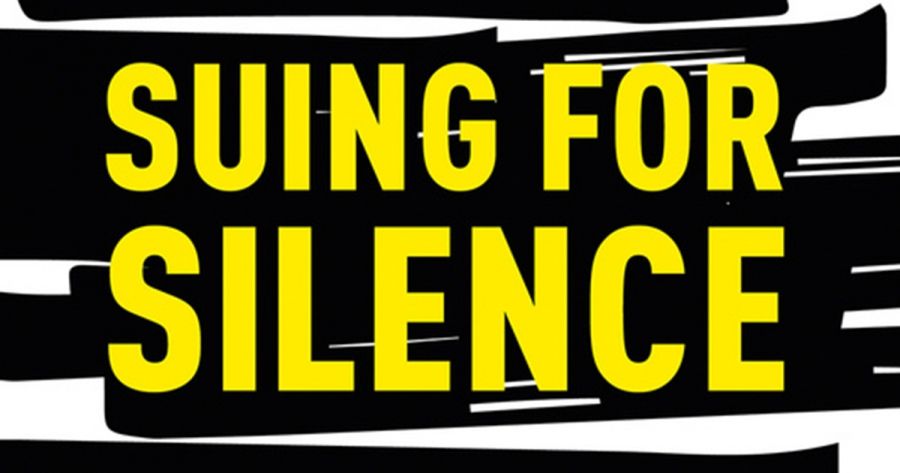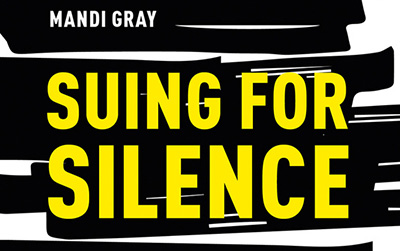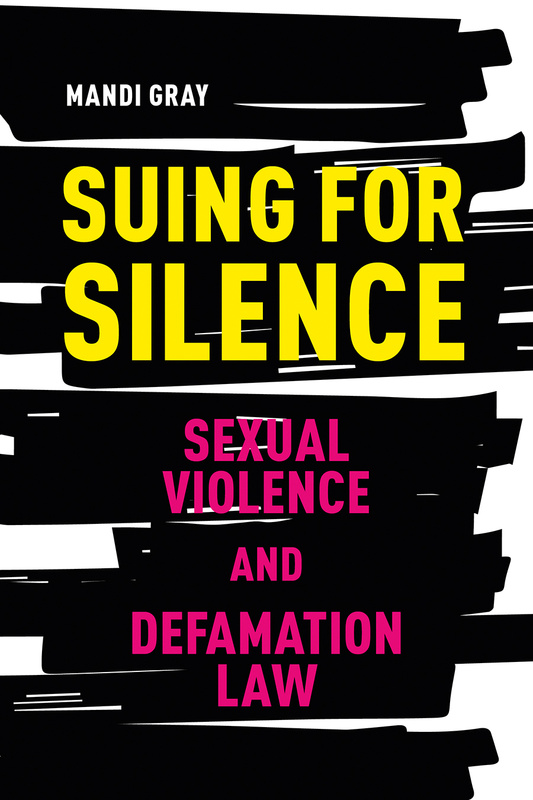
- Free Article: No
- Contents Category: Law
- Review Article: Yes
- Article Title: Silence breakers
- Article Subtitle: A feminist critique of defamation law
- Online Only: No
- Custom Highlight Text:
I began Mandi Gray’s book while waiting for the judgment to be handed down in Bruce Lehrmann’s defamation case against Network Ten and journalist Lisa Wilkinson. I had tuned into the live-streamed trial months earlier, along with 124,444 others, to hear Brittany Higgins being interrogated about her recollections of that fateful night in Parliament House. Gray’s argument – that some men were using defamation law to inflict further abuse and punishment on their victims, to cow them into silence, to chill public discussion of sexual violence – seemed apt indeed.
- Featured Image (400px * 250px):

- Alt Tag (Featured Image): Jessica Lake reviews ‘Suing for Silence: Sexual violence and defamation law’ by Mandi Gray
- Book 1 Title: Suing for Silence
- Book 1 Subtitle: Sexual violence and defamation law
- Book 1 Biblio: University of British Columbia Press, Can$32.95 pb, 174 pp
- Book 1 Cover Small (400 x 600):

- Book 1 Cover (800 x 1200):

Gray is a sociologist and criminologist, not a defamation law expert, but this adds strength to her account. Chronicling individual cases, the book documents her discovery of defamation law and civil procedure, sharing the journey with the reader. Her interest was piqued by personal circumstances – she was sued for supporting a friend, who disclosed sexual violence at the hands of a fellow faculty member. Her prose is direct and matter of fact, and she notes that the biggest constraint on her study was, ironically, a fear of being sued again. Gray thus chooses her words carefully, and so too must I.
Suing for Silence examines the experience of being sued for defamation or threatened with proceedings after ‘reporting’ sexual violence (via formal avenues), ‘disclosing’ it (via informal channels), or supporting those who have done so. It focuses predominantly on the post #MeToo landscape and on the backlash of defamation lawsuits brought by men accused of sexual violence. Gray terms those entangled in legal action after speaking out – victim/survivors and advocates – ‘silence breakers’. This is a book about the ways in which men – yes, I know, #NotAllMen – are using the legal system to suppress the voices of silence breakers and to ‘reprivatize’ the problem of violence against women.
The geographic scope is tight – confined to Canada – but Gray recognises that the weaponisation of defamation law is a global problem. It is happening in Australia (as in the United States, South Korea, England, Sweden, France, etc.). The rules and mechanisms for bringing, prosecuting, and defending civil actions differ between jurisdictions. But Gray is primarily intent on identifying and describing a social and cultural phenomenon – a gendered one – that is playing out in legal language and via our courts.
Drawing on interviews with silence breakers, as well as lawyers and anti-violence advocates, she investigates the consequences – individual and societal – of such defamation lawsuits. How do they push discourse about sexual violence back into the private sphere? Are they Strategic Lawsuits Against Public Participation (known as SLAPPs in Canada and the United States)? In other words, do they seek to silence speech on matters of public interest more than to protect an individual’s reputation?
Employing Jennifer Freyd’s concept of DARVO (Deny, Attack, and Reverse Victim and Offender) to understand men’s motivations, Gray argues that some abusive men use the legal system to continue their abuse and frame themselves as the ‘true victim’. She concedes that some innocent men also defend themselves against untrue allegations, but posits that it is mostly abusive men who engage in numerous forms of retaliation, who pursue women on multiple fronts, for sustained periods.
Take the case of Lynn, a tattoo artist, who reported her boss to the police for rape. He was charged, tried, and acquitted and then sued her for defamation. It took years for Lynn to successfully defend his defamation suit. Then there is Morgan, who was in a long-term relationship with a man who was sexually, physically, and emotionally abusive. She told others and received a legal letter asking her to publicly apologise. Another woman, Catherine, was served with a lawsuit at her work by a man who had sexually violated her, after she posted about it on social media.
Nearly all silence breakers experienced anxiety, depression, and suicidal ideation. Lawsuits made it harder to heal from sexual violence. In the words of one: ‘It’s like trying to heal burns when you are standing in the fire.’ They also suffered somatic symptoms. Laura, subject to a ‘gag order’ (confidentiality agreement), commented: ‘I actually developed symptoms where my face would go numb, and I was having all these throat issues. I was having physical symptoms of being gagged.’
The most profound consequence, Gray argues, is the effect of these lawsuits on public discussion of sexual violence. They work – by intimidating individual women and chilling media reporting – to push stories of sexual violence into ‘obscurity’. Courts condemn silence breakers for not reporting sexual crimes the ‘right way’, with little recognition that the systems fail more victims than they assist, and that even reporting to police or an employer does not protect you from defamation litigation.
Gray proposes several recommendations to prevent or counter men’s weaponisation of defamation law. Education for the anti-violence sector, and for those considering reporting or disclosing sexual violence, is key: ‘These people require knowledge of defamation law.’ As a media lawyer, I often participated in meetings set up to educate journalists, but as social media has turned us all into authors and publishers, a broader knowledge of the legal perils attending speech has become essential.
Gray supports conferring ‘absolute privilege’ (defamation immunity) on the formal reporting of sexual violence. In recent weeks, the Victorian government has done just that – protecting reports made to the police from defamation litigation. Unfortunately, Victoria stopped short of extending such protections to reports made to employers and other institutions.
Gray’s book reads like a warning. Survivors, be careful what you say. Advocates, call out these lawsuits as abusive before sexual violence is pushed back into the realm of private shame. But perhaps Gray should also have warned abusive men against using these tactics. As I finished her book, the Federal Court gave judgement on Lehrmann v Network Ten, declaring that on the balance of probabilities Bruce Lehrmann raped Brittany Higgins. That ‘omnishambles’, as Justice Lee termed the case, should also serve as a cautionary tale.


Comments powered by CComment